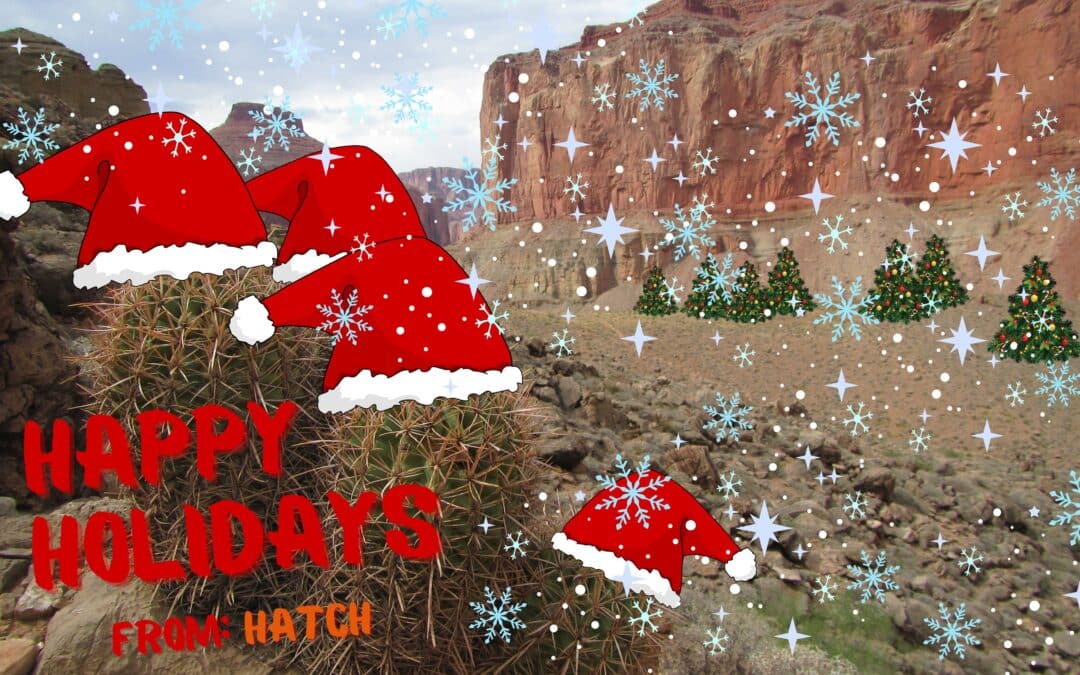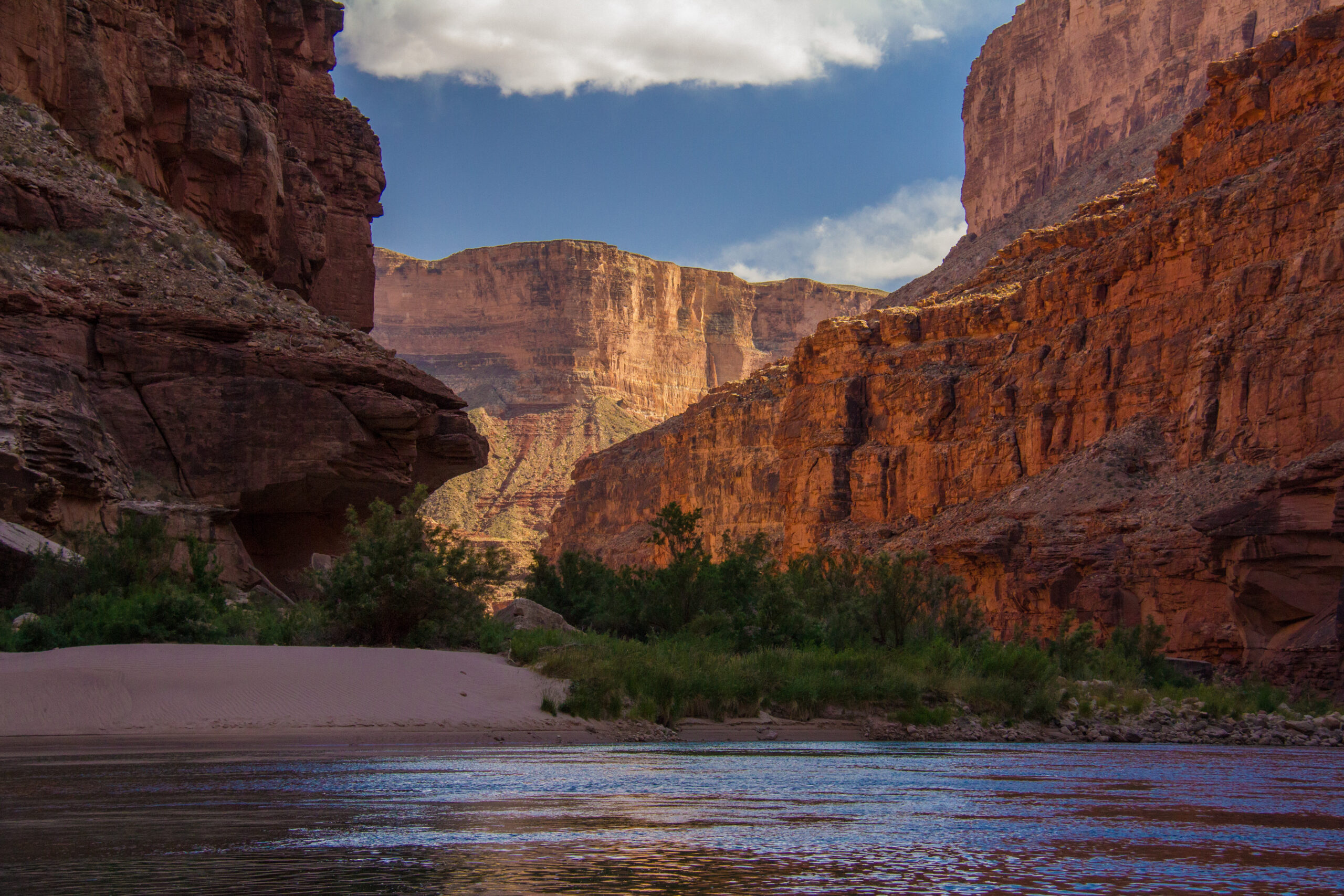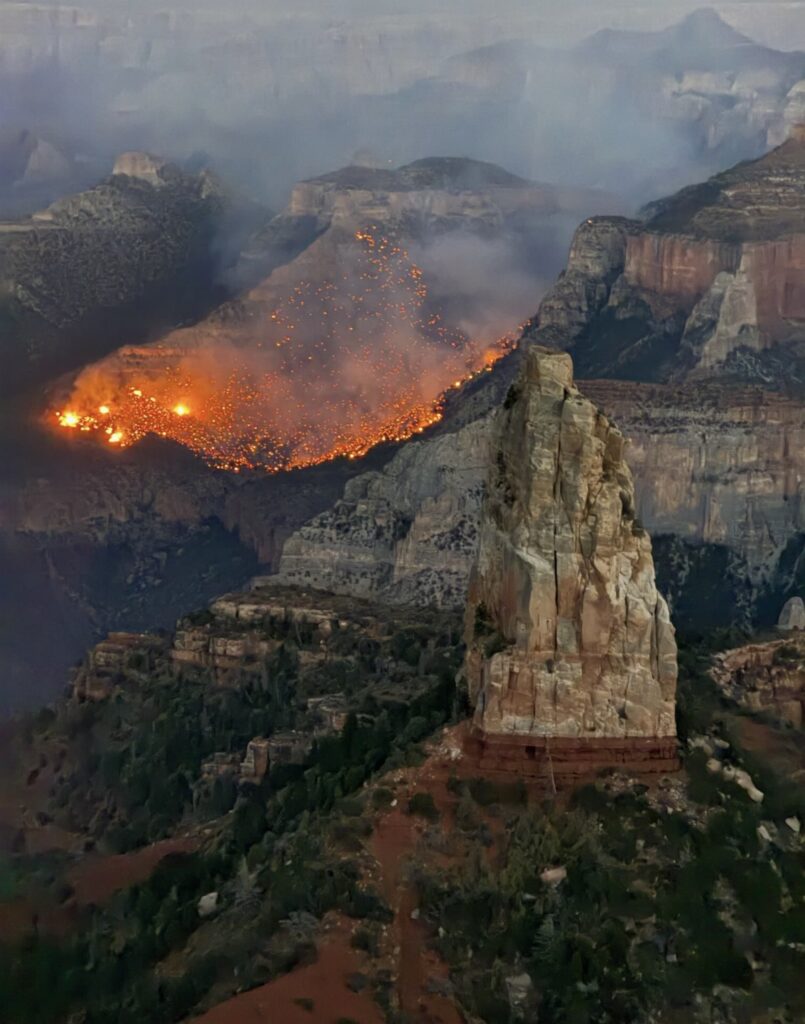Happy Holidays from Hatch! Whether you’re celebrating Christmas or other holidays throughout this wintry season, we are wishing you...


This past week, I got a call from our office asking if I’d be willing to talk to some seventh graders about the Grand Canyon. It was definitely an unusual request for me, but of course I said yes.
When I asked what the talk was for, I found out that students in a seventh grade class on the other side of the country were doing a project on climate change through the lens of National Parks. They were supposed to interview a park ranger, but their interview got canceled due to the government shutdown.
Their teacher, who had done a river trip with us a few years back, remembered the experience and decided to take a chance by reaching out to us. She wanted to know if a guide would be willing to help her students. After hearing all of this, of course I couldn’t say no. The Zoom interview was scheduled for 11:00 a.m. the next Tuesday.
The questions those students asked were thoughtful and interesting. I love all things Grand Canyon and sharing what I know with others, so I thought I’d share a few of the questions they asked — along with my answers — with you as well.
Q: Is learning about the Grand Canyon a big part of your job?
Absolutely! There’s always something new to learn about the Canyon. Every time I’m down there, I see or discover something new. The Grand Canyon is so full of life, history, geology, and culture that a single lifetime wouldn’t be enough to learn everything it has to offer.
Q: Do you know why this area was specifically chosen as a national park?
While I can’t speak to the exact thoughts of the officials who made that decision, I imagine their reasoning wasn’t so different from what millions of visitors feel when they come here: that this place is incredibly special.
The Grand Canyon is home to a wide range of ecosystems and thousands of plant and animal species. It’s a paradise for geologists, historians, and nature lovers. There’s simply nowhere else like it on Earth. It’s full of magic and life — and it deserves to be protected.

Q: Have there been many major issues with climate change in the park lately?
Climate change impacts are being felt worldwide, and while they’re not always obvious, they’re very real here too — especially when it comes to water.
One big issue is the water temperature. Lake Powell, which feeds into the Colorado River through Glen Canyon Dam, has had lower water levels in recent years due to reduced snowmelt. Less water means it heats up more easily, so even the deep, cooler layers of the lake are warming. Even though the amount of water being released from Glen Canyon dam during our summer trips is the same as its been for decades, the water itself is warmer.
Where the Grand Canyon once saw water temperatures in the low 50s (Fahrenheit), it’s now regularly in the mid-50s. That might not sound like a huge difference, but it has consequences for the ecosystem — especially the fish.
Another major impact was this year’s Dragon Bravo Fire, which started on July 4 from a lightning strike. Years of drought had left the forest extremely dry, and the fire quickly spread, burning 145,000 acres. While the fire is now out, its effects will be felt for years. With vegetation burned away, rain can no longer be absorbed by the soil, increasing the risk of flash floods.
Q: How do these issues affect us or the animals in the area?
Let’s start with the river. The warming water allows non-native species like smallmouth bass to enter the canyon — and they pose a real threat to native species.
For example, the humpback chub, a native fish, may now have to compete for space and survival. Warmer waters and new predators force these fish to move to other areas of the river in order to survive
As for the fire, it’s not just about the trees. That 145,000 acres of burned land also means 145,000 acres of lost habitat. Wildlife has to migrate to other parts of the park, and recovery of that area could take decades.
Q: Do you know how the Grand Canyon was formed?
I’ll keep this short and sweet, because if we went full geology mode, we might be here all day.
Over millions of years, changing environments — oceans, swamps, deserts, volcanic activity — laid down different layers of rock. Eventually, tectonic activity caused these layers to lift, creating what’s called a monocline, in this case the Colorado Plateau.
Then the Colorado River showed up and got to work, slowly carving through these layers and creating the Grand Canyon as we know it today. Simple version: a combination of time, water, uplift, and erosion made one of the most iconic landscapes on Earth.
Getting to talk to these seventh graders reminded me how important it is to keep sharing stories from the Grand Canyon — not just the beauty of it, but the challenges it faces too. I’m grateful I had the chance to speak with them, and even more grateful to spend so much time in a place as extraordinary as this.
Want to learn more? Read our press release about how Hatch River Expeditions stepped in when the government shutdown halted a 7th grade class’s park ranger interviews.
If you’re rafting when there are monsoons in Grand Canyon, you might experience something incredible Imagine this: It’s your second day in the canyon and you are overwhelmed by how monumentally tall the walls around you seem to have gotten in such a short time. In the...
Bugs in Grand Canyon! With Halloween at the end of the week, it will be hard to go anywhere without being inundated by pumpkins, spider webs, costumes, and candy. In the spirit of the season, we thought you might like to know a bit about some of the more...
Stanton’s Cave: An Archaeological Gem in the Grand Canyon The Grand Canyon is full of archaeological and paleontological wonders, but one site that truly stands out for its unique treasures is Stanton’s Cave. Named after Robert Brewster Stanton, the cave was...